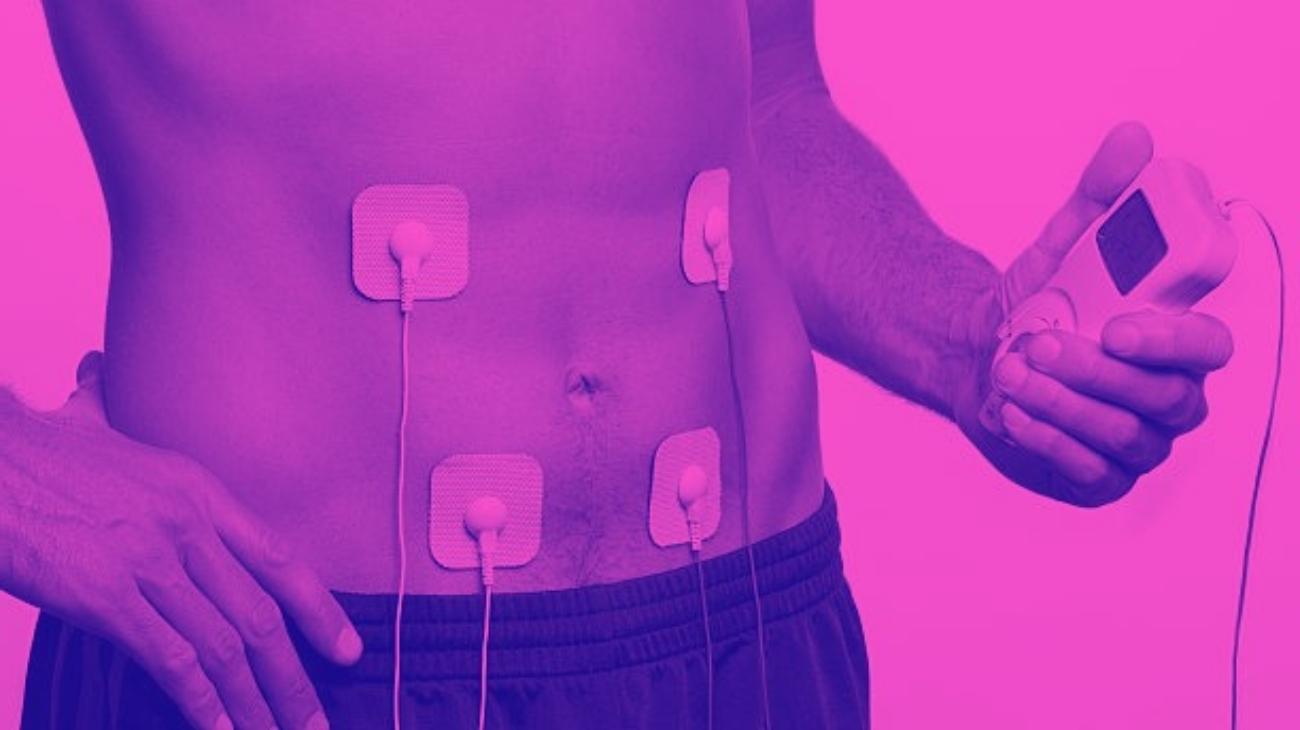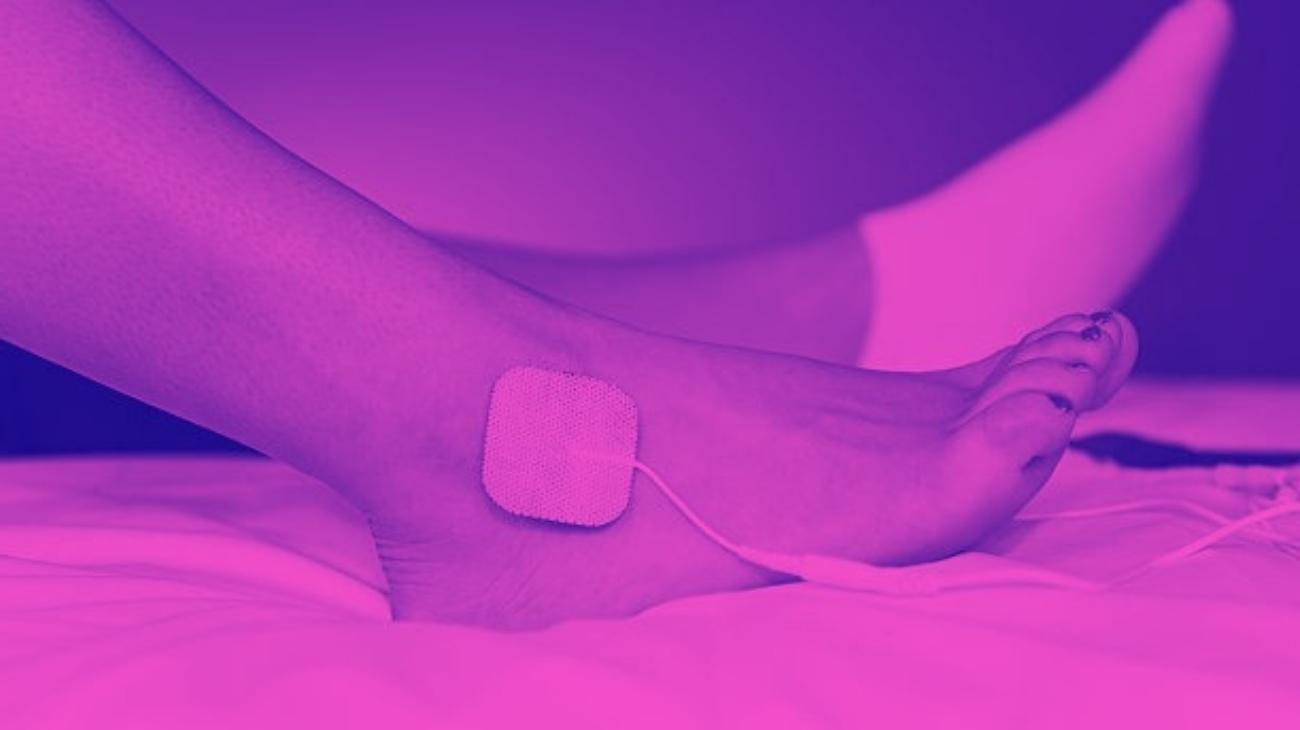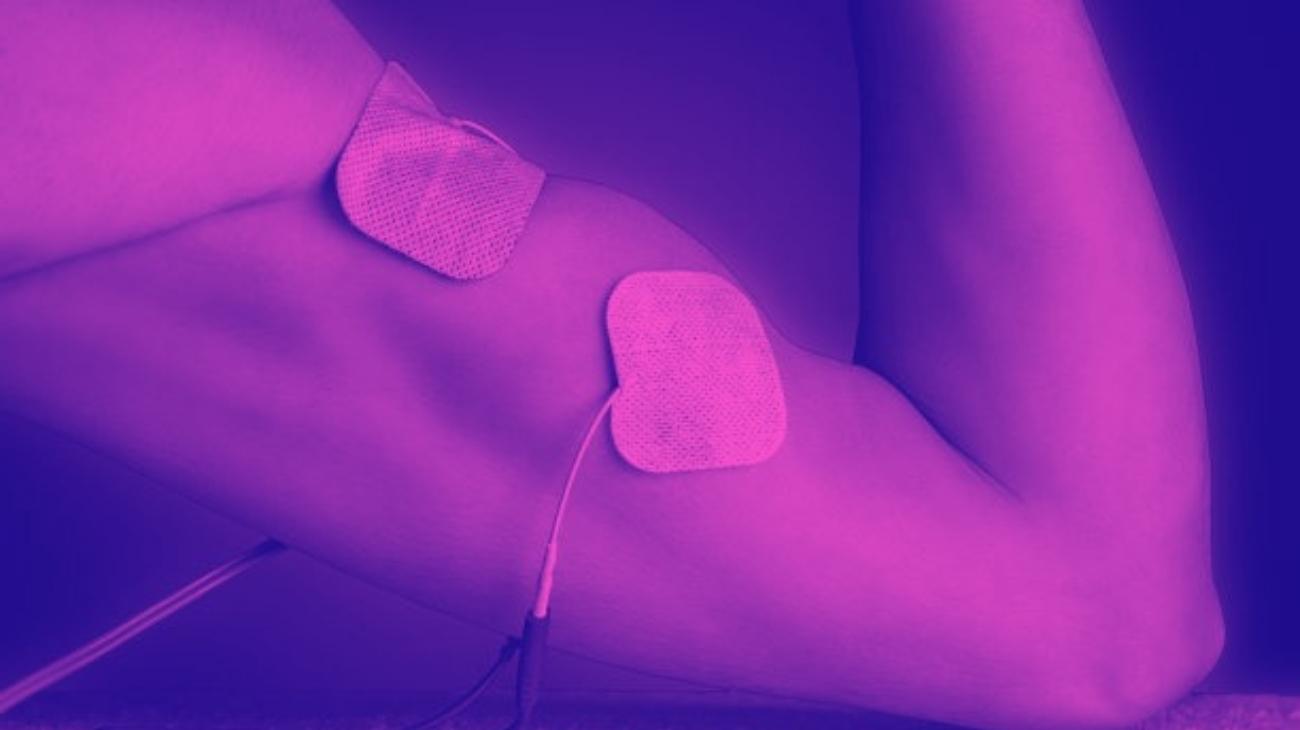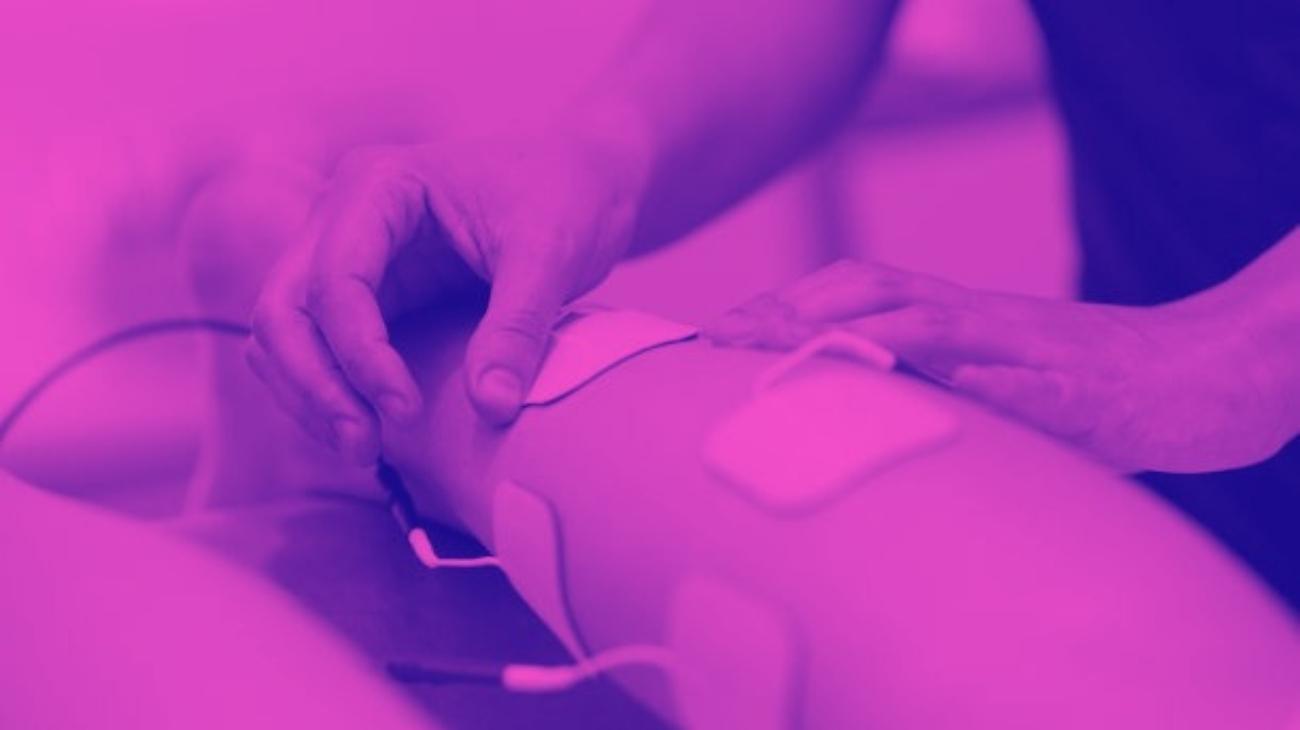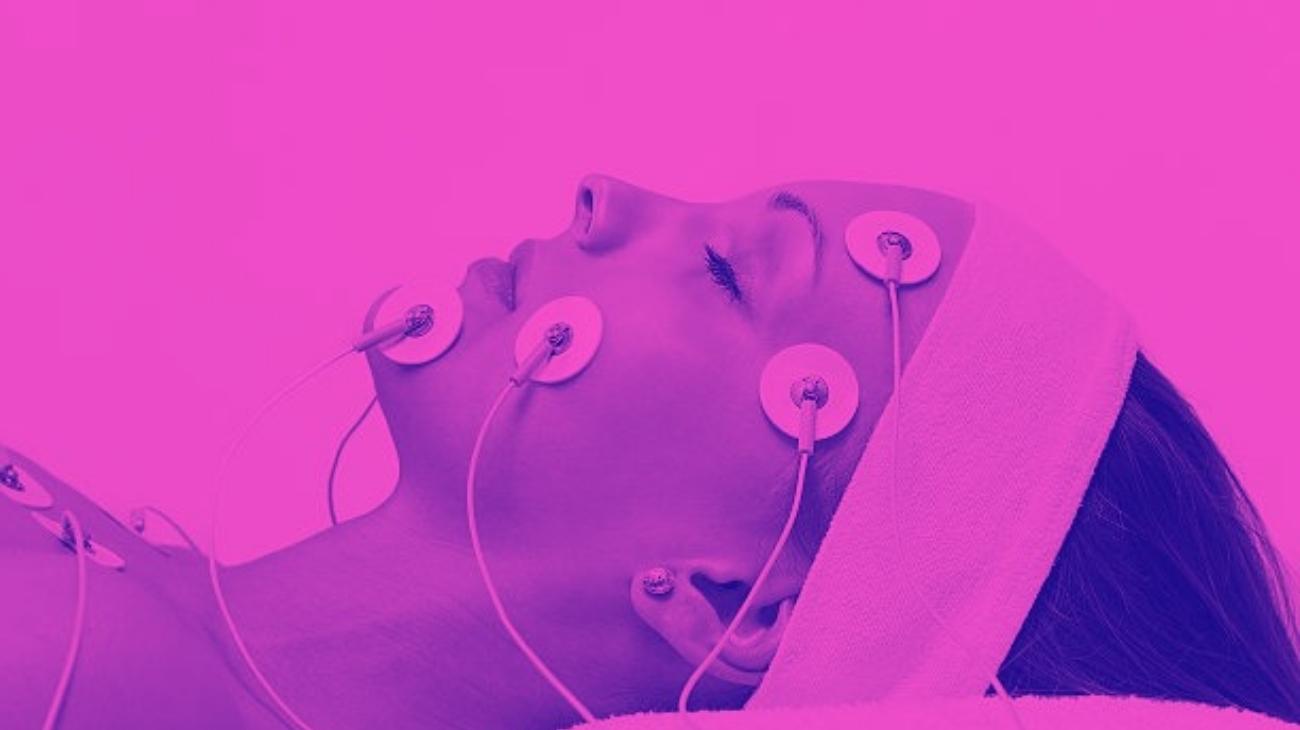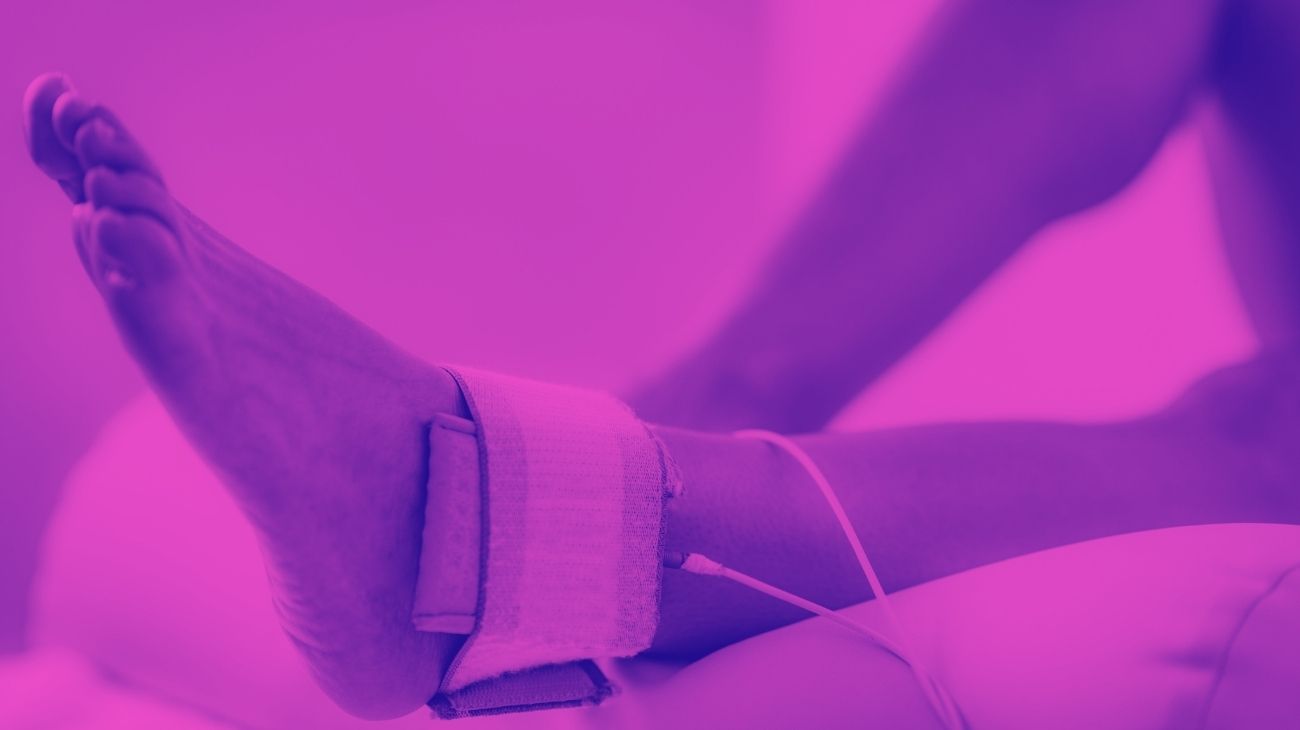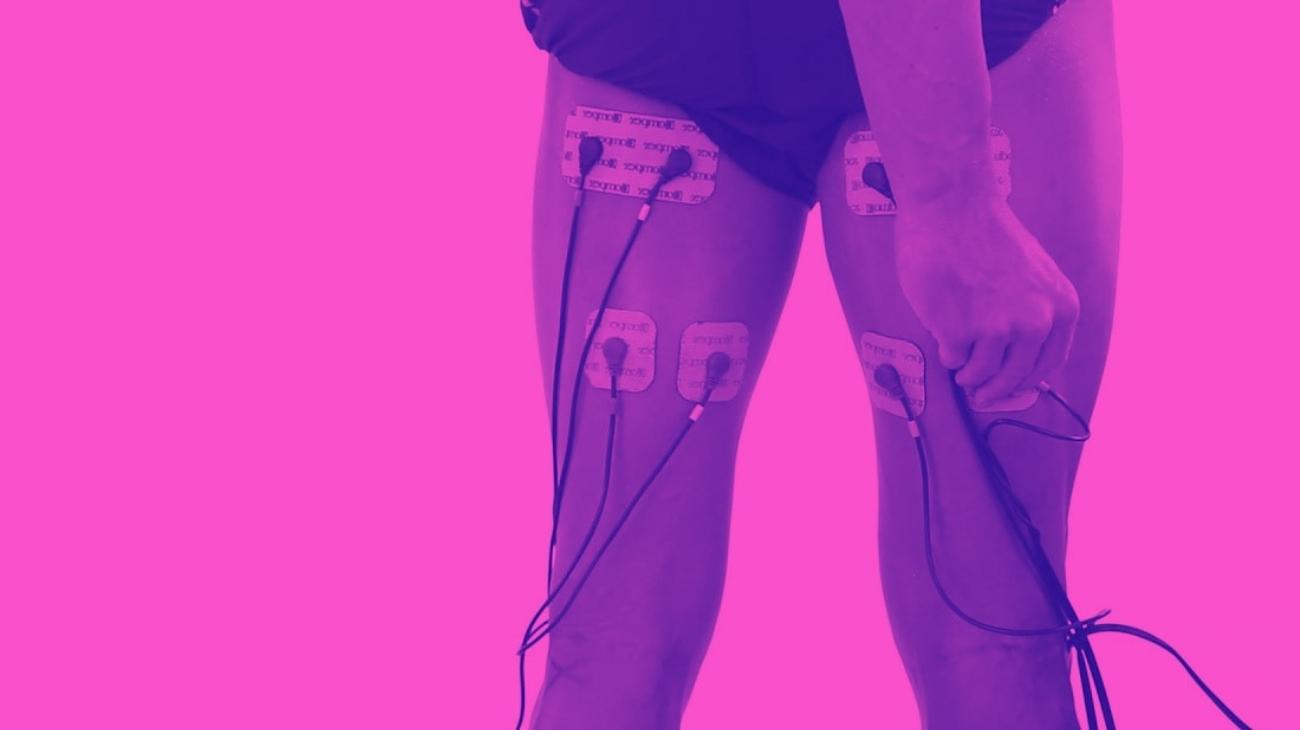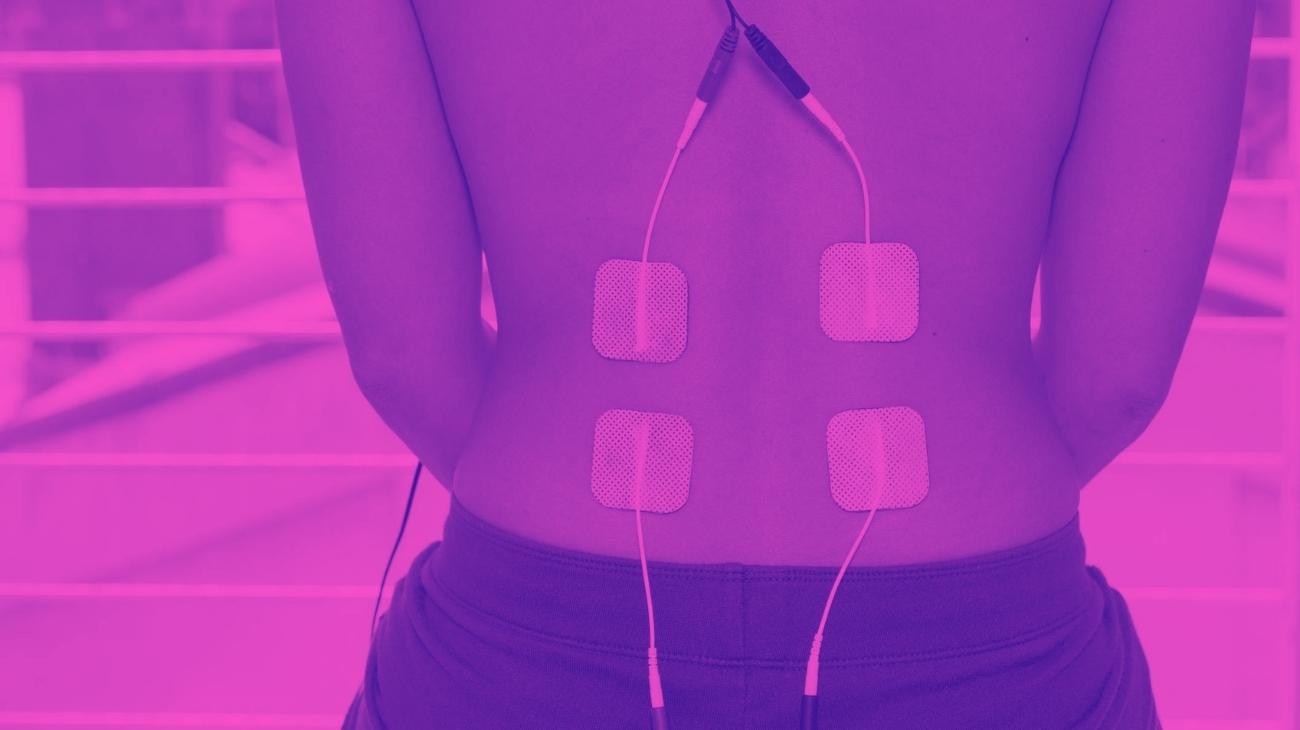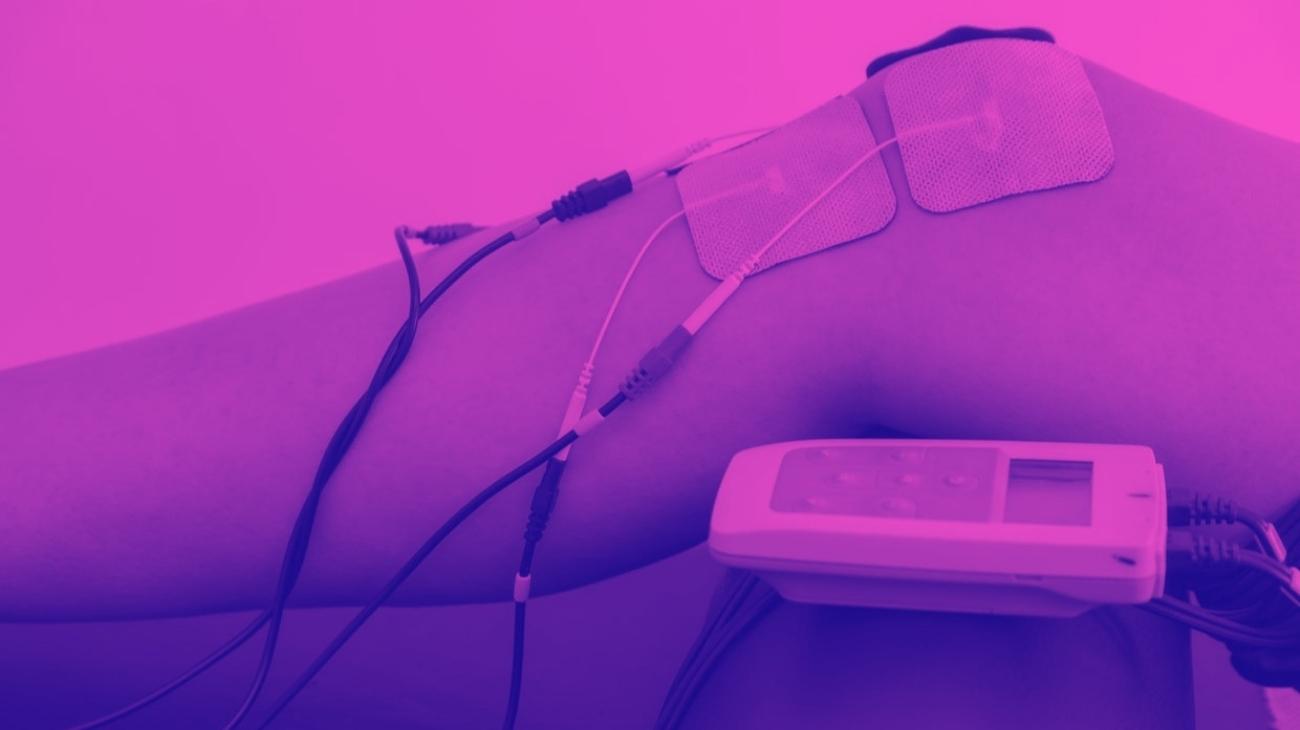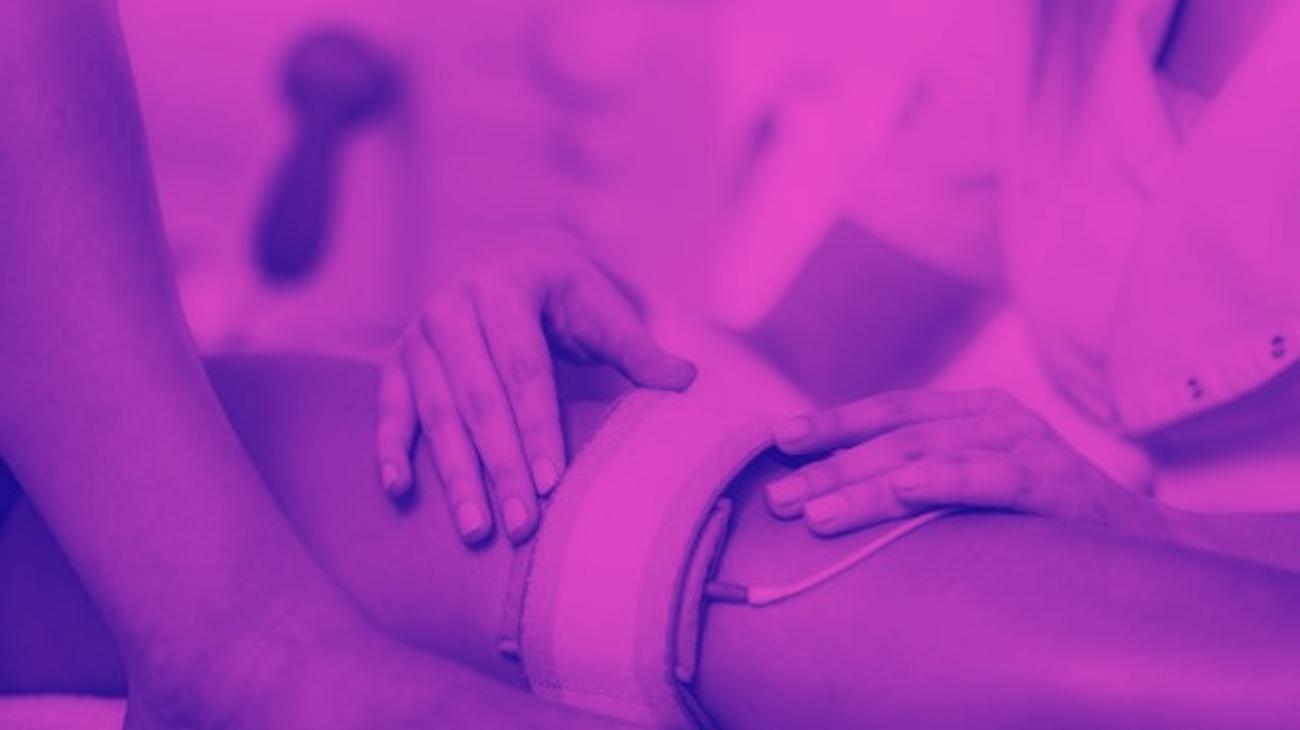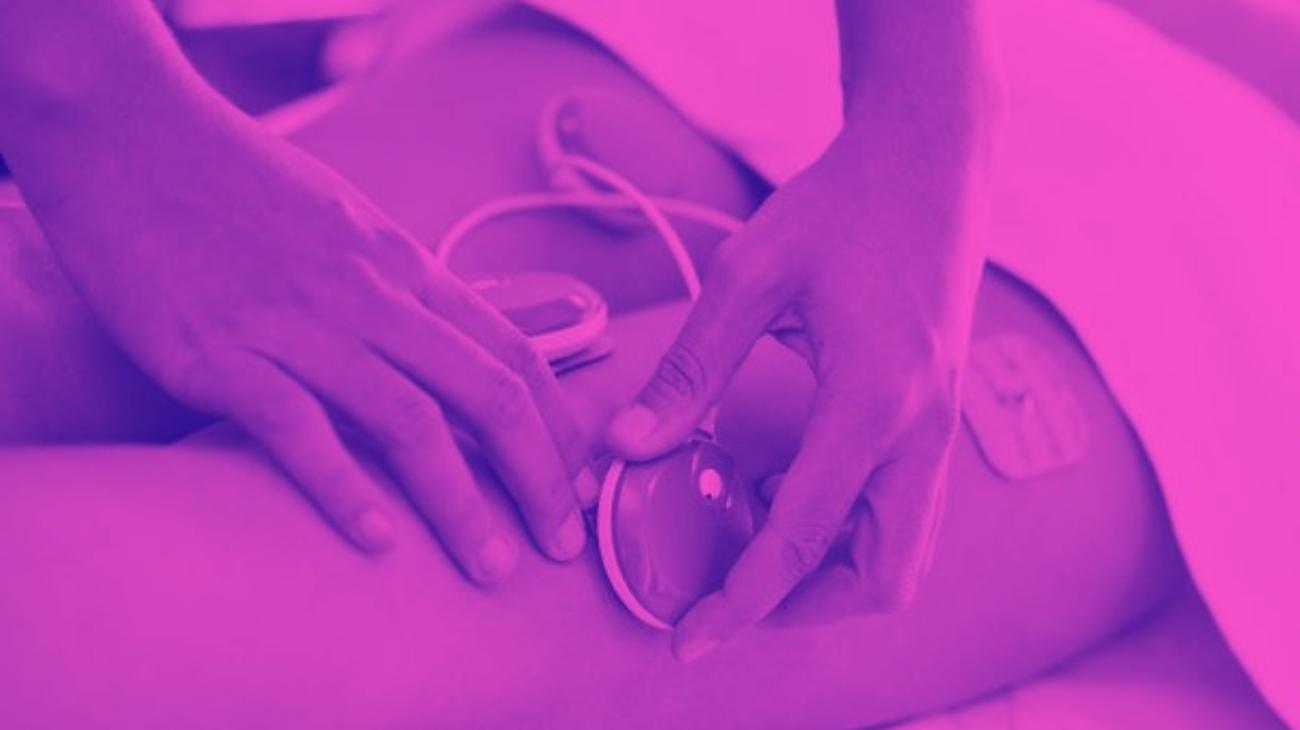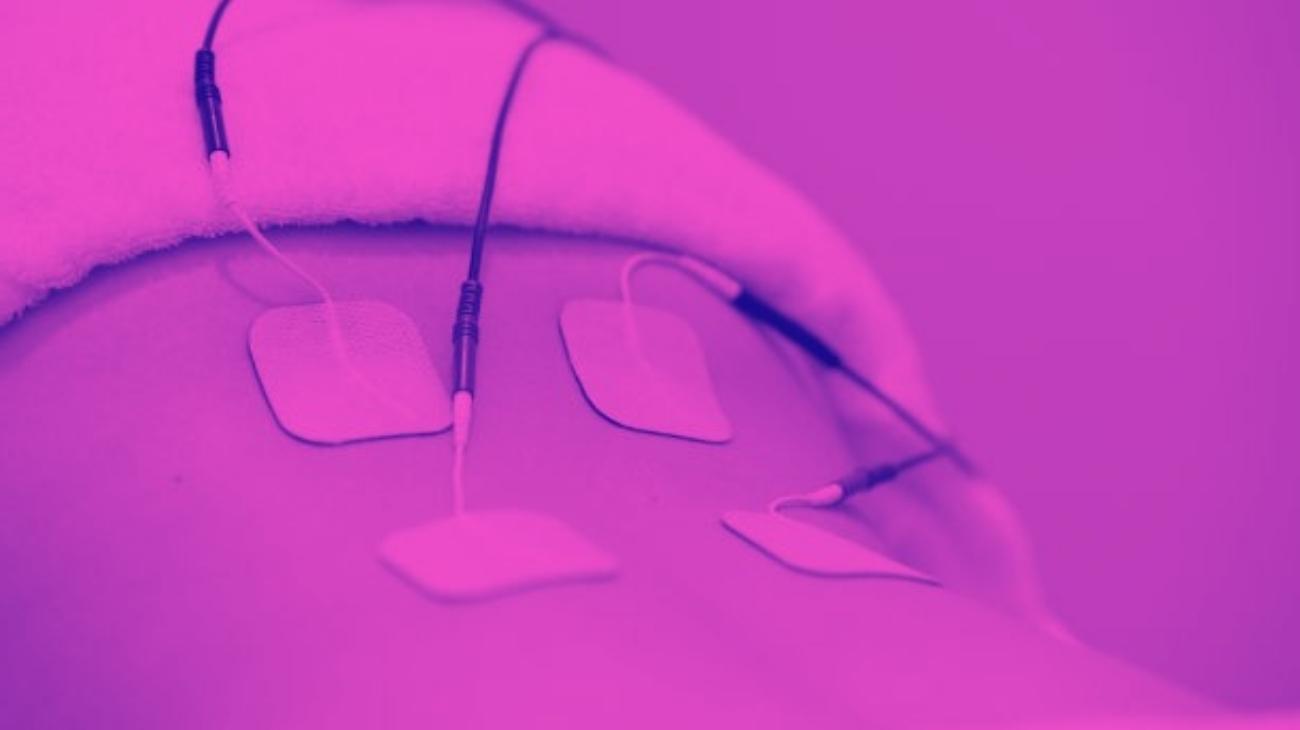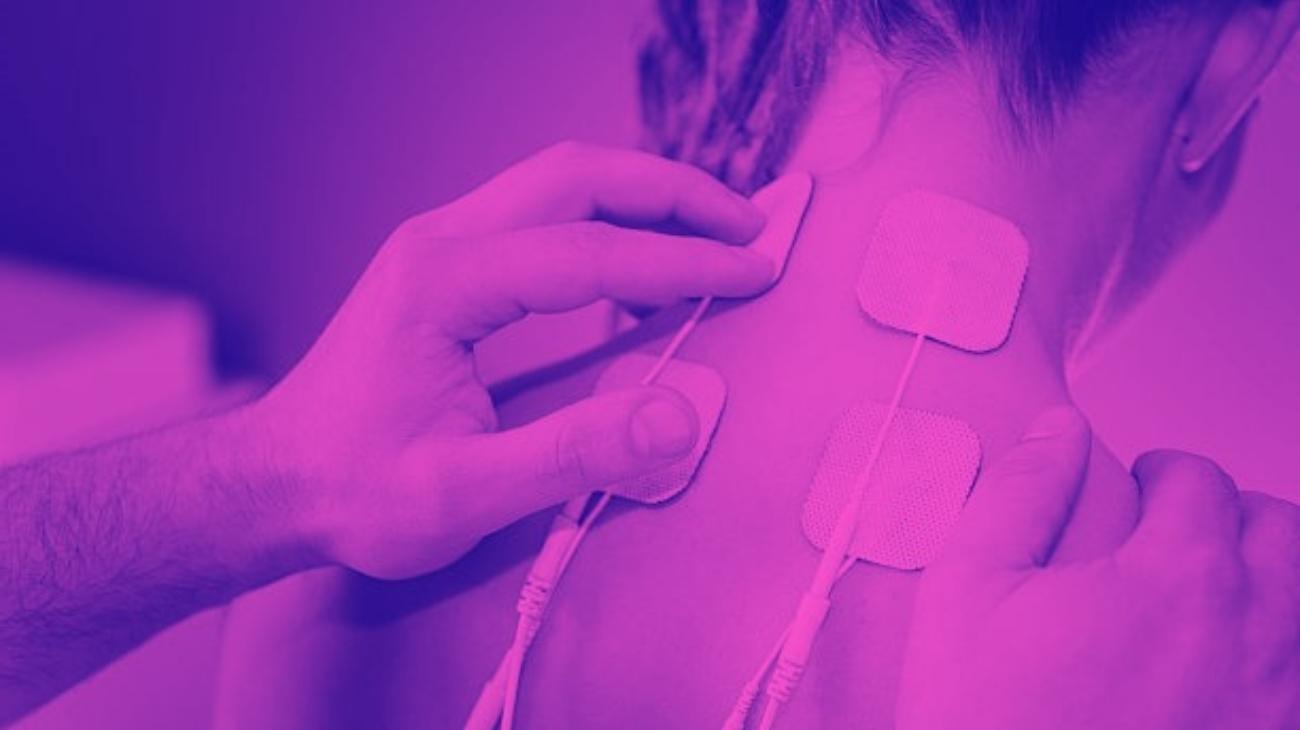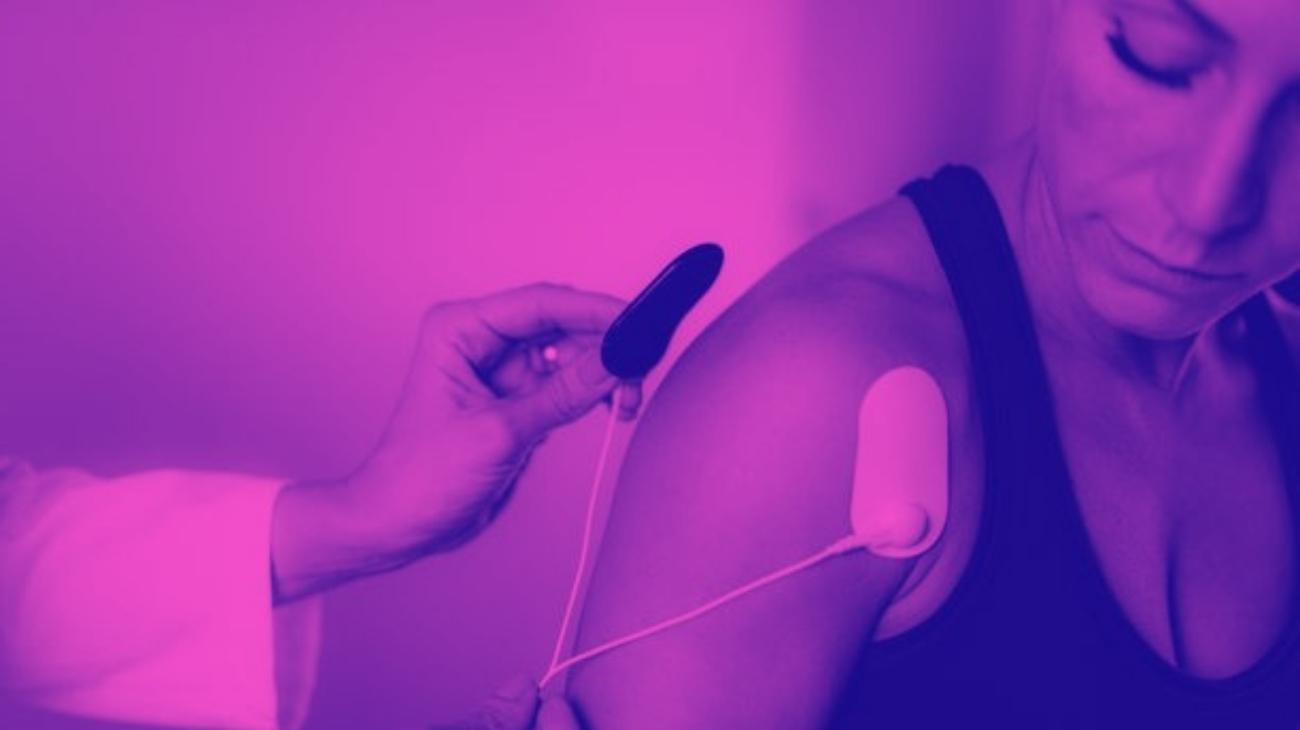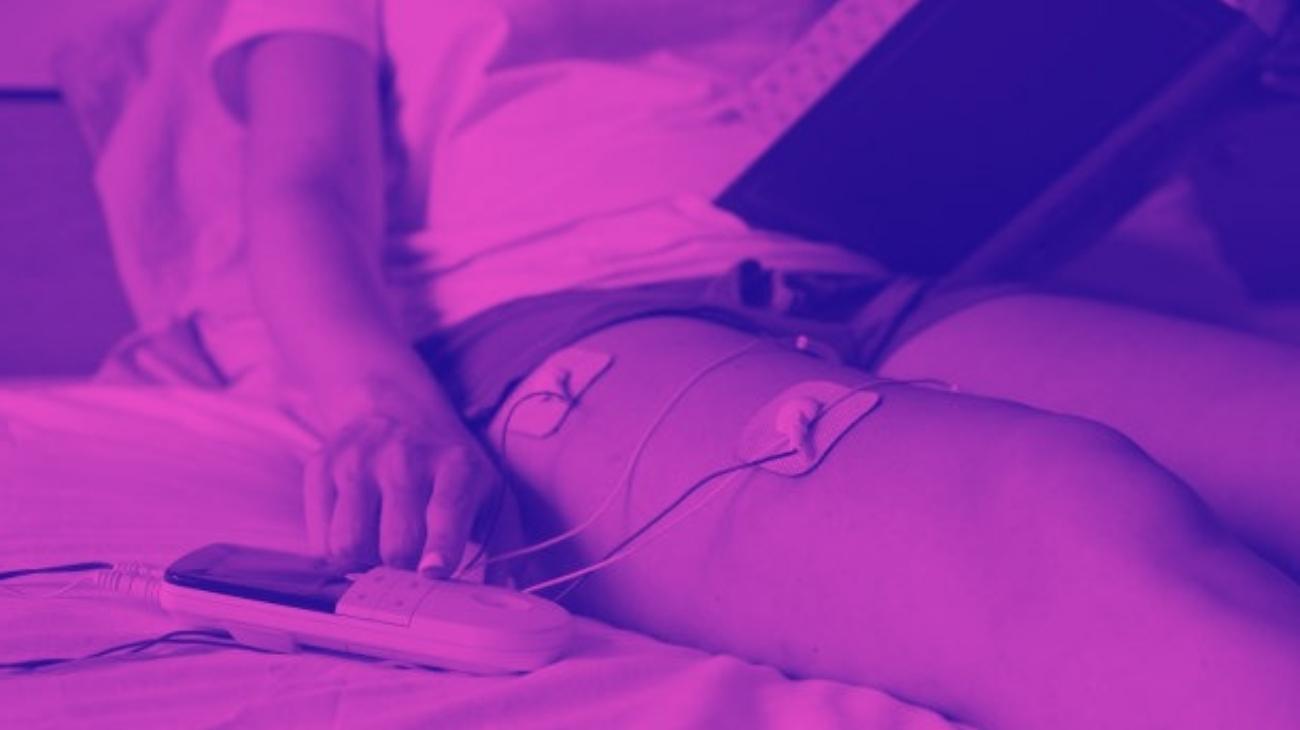- How to use a TENS machine to relieve low back pain?
- Best TENS machines for back injury recovery
- How to use an EMS muscle stimulator for the back?
- Best EMS electrostimulators to strengthen back and lumbar muscles
- Video: How to place the electrodes pads on your back?
- More types of EMS stimulators and TENS machines you should know about
- Most common types of back injuries
- Differences between TENS and EMS: Which one to use for back pain?
- Contraindications in the use of electrodes and electrotherapy
Regardless of whether you are a person living your day-to-day life or a highly competitive athlete, the back is one of the most important areas of the body and at the same time one of the most vulnerable, since the simple fact of maintaining an inadequate posture can have a negative impact on it, even causing major injuries.
Due to the common ailments in this area of the body, electrostimulation through TENS and EMS is of great relevance as a treatment to relieve pain or strengthen the muscles in this area. Therefore, in the following paragraphs we will show you the correct way to use both methods.
How to use a TENS machine to relieve low back pain?
TENS unit therapy uses low intensity currents that act on the skin and penetrate deep into the dorsal, lumbar and cervical muscles, reaching the nerves to control their pain receptors.
Among its main uses and benefits we can highlight the following:
- Increases pain resistance: the electrical impulses created by the TENS machine directly affect the nerve receptors along the lumbar, dorsal back or cervical area, increasing the pain threshold and providing relief during and after the session.
- Reduces the production of cells that cause pain: TENS therapy suppresses the cell groups responsible for producing the sensation of pain, generating immediate relief to the patient.
- Alterations in the reciprocal innervation: in this way a relaxation of the trapezius, dorsal, rhomboid and other back muscles is achieved, avoiding the involuntary tension that we all have when we feel pain, causing a very pleasant analgesic effect.
- Increased blood flow: the electric shocks applied to the back cause the dilation of the blood vessels found in it, generating a local decrease in pain and generating a feeling of relief that lasts until some time after the session.
With this in mind it is necessary to emphasize the fact that TENS units are not intended for the healing of lumbar, dorsal or cervical injuries, but for pain relief, so their use is only recommended to reduce patient discomfort while other treatments are being applied.
Best TENS machines for back injury recovery
We now present for you a list of the best transcutaneous electrical stimulation machines available on the market, which will be of great help in reducing the pain of back injuries.
- Type: TENS
- Channels: Dual
- Modes/Programs: 20 Modes
- Intensity: 20 Levels
- Wireless: Yes
- Heat Therapy: No
- Battery: Rechargeable Lithium (up to 10 hours)
- Electrodes: 8 Pads
- Display: Digital
- Size: Not specified
- Accelerates recovery from sports injuries
- Improves blood circulation
- Rechargeable battery
- Portable and small size
- Includes user manual
- Does not specify measurements and weight
- Not suitable for muscle hypertrophy
- No heat therapy
It has an independent dual-channel control mode, which allows you to treat different parts of the body with different settings and intensities as required. You can select from 20 preset massage modes, each designed to relieve certain types of pain and produce an overall sense of relief.
Med-Fit - Dual channel TENS machine for fast, effective and accurate pain relief ideal for home use
- Type: TENS
- Channels: Dual
- Modes/Programs: 5 Modes
- Intensity: Not specified
- Wireless: Yes
- Heat Therapy: No
- Battery: Batteries
- Electrodes: 8 Pads
- Display: Digital
- Size: Not specified
- Reduces pain symptoms
- Improves joint mobility
- Improves blood circulation
- Accelerates recovery from sports injuries
- Includes user manual
- Does not specify intensity levels
- Does not specify which type of batteries to use
- Does not specify measurements and weight
Its transcutaneous electrical stimulation function offers an infallible form of acute and chronic pain relief through electrical impulses that block pain signals and promote the production of endorphins, making it ideal for treating the symptoms of arthritis, sciatica, muscle pain, joint pain and much more.
- Type: TENS
- Channels: -
- Modes/Programs: 4 Programmes
- Intensity: 15 Levels
- Wireless: Yes
- Heat therapy: No
- Battery: 2 AAA Batteries
- Electrodes: 6 Pads
- Display: No display
- Size: 22cm x 13cm x 5cm - 417 gr
- Control from mobile app
- Reduces pain symptoms
- Includes user manual
- Improves joint mobility
- Portable and small size
- No display included
- Few types of programmes
- Not suitable for muscle hypertrophy
With a size of 19 cm wide and 9 cm high, the WiTouch has the widest area of action on the market, with a current output strength of 0 - 110 mA for maximum effectiveness. It has a 2-button function that allows you to quickly change the device settings, and includes 3 reusable gel pads in the package you receive.
- Type: TENS
- Channels: -
- Modes/Programs: 6 Modes
- Intensity: Not specified
- Wireless: Yes
- Heat Therapy: No
- Battery: Rechargeable
- Electrodes: 4 gel electrodes
- Display: Touch
- Size: Not specified
- Improves joint mobility
- Improves blood circulation
- Accelerates recovery from sports injuries
- Reduces pain symptoms
- Wireless electrodes
- No intensity levels specified
- Does not specify measurements and weight
- Not suitable for muscle hypertrophy
Its low intensity electric impulses offer a complete recovery of muscular and nervous pains, and its reusable electrodes have a superior quality adhesive gel, long lasting and easy to apply, so that each session can be carried out in a very simple way.
- Type: Combo (TENS+EMS)
- Channels: 4
- Modes: 15 Programmes
- Intensity: Not specified
- Wireless: No
- Heat therapy: No
- Battery: 4 AAA
- Electrodes: 8 Pads
- Display: LCD
- Size: Not specified
- Improves blood circulation
- Includes 15 modes
- Independent control mode
- Reduces pain symptoms
- No rechargeable battery
- Does not specify intensity and size
It also has a session timer that allows you to control the duration of the therapies. You will be able to set the time of each session in an interval between 10 and 80 minutes. The package includes 1 electro stimulator, 4 sets of guide wires, 4 pairs of electrodes, 1 electrode case, 3 AAA batteries, 1 pad positioning guide and 1 user manual.
How to use an EMS muscle stimulator for the back?
EMS therapy is focused on strengthening muscles through the use of a medium to high intensity current to create muscle contractions. And since the back is one of the regions of the human body that contains the most muscles, the effectiveness of this treatment is notorious.
Among the benefits of EMS stimulation against back injuries are the following:
- Increased speed of recovery: the muscle contractions caused by EMS discharges stimulate tissue regeneration at a faster rate thanks to the increased blood supply to the various muscles of the middle, lower and cervical back.
- Reduction of fatigue: reduces oxygen consumption of the trapezius, lumbar and dorsal muscles, essential for spinal stability, by up to 16%, which translates into an increase in fatigue resistance of approximately 20%.
- Prevention of future injuries: the effective combination of exercise, good nutrition and EMS stimulation strengthens the back muscles and improves the absorption of nutrients from them, making them more resistant and elastic to prevent future ailments.
- Relaxation and strengthening of the back muscles: electrostimulation to the back muscles provides a form of passive training, which provides a strengthening of muscle mass and increased strength, while relaxing the stimulated muscle groups.
- Improved blood supply: The vasodilation caused by the electrical stimuli increases blood supply by up to 20% in the trapezius, deltoid or cervical splenius, which increases their growth potential and their ability to recover from injury.
Best EMS electrostimulators to strengthen back and lumbar muscles
Here are the best electrostimulators you can buy to strengthen the various muscle groups of the middle, lower and cervical back:
- Type: EMS
- Channels: 4
- Modes/Programs: 40 Programmes
- Intensity: Not specified
- Wireless: Yes
- Heat Therapy: No
- Battery: Rechargeable
- Electrodes: 4 electrodes
- Display: Digital
- Size: 15 x 34 x 30 cm; 200gr
- Wireless electrodes
- Includes user manual
- Prevents muscle atrophy
- Portable and small size
- Includes carrying bag
- No heat therapy
- No battery life specified
- No intensity levels specified
It features MI tracking technology, which allows the SP 8.0 to perform a quick automatic muscle scan, and set the appropriate program according to the goal you want to achieve. This professional-grade training device will revolutionize the way you exercise, as it is designed for athletes who practice their discipline on a daily basis.
- Type: Combo
- Channels: Not specified
- Modes/Programs: Not specified
- Intensity: 20 Levels
- Wireless: Yes
- Heat Therapy: No
- Battery: Rechargeable Lithium (up to 8 hours)
- Electrodes: 2 Pads
- Display: -
- Size: Not specified
- Improves blood circulation
- TENS+EMS Combo
- Wireless Device
- Accelerates recovery from sports injuries
- Reduces pain symptoms
- Does not specify measurements and weight
- No display included
- Modes/programs not specified
It has a rechargeable battery that provides an autonomy of up to 8 hours, and more than 1000 charges. You can charge it through its USB port, by means of the cable included in the package. In addition, you will find the mini electrostimulation unit, 1 butterfly electrode, 2 self-adhesive electrodes of 2x5 cm, 1 user manual and several guides for positioning the unit.
- Type: Combo
- Channels: -
- Modes/Programs: 15 Programs
- Intensity: Not specified
- Wireless: Yes
- Heat Therapy: No
- Battery: Rechargeable Lithium
- Electrodes: 4 Pads
- Display: No display
- Size: Not specified
- TENS+EMS combo
- Control from mobile app
- Rechargeable battery
- Includes user manual
- Reduces pain symptoms
- No battery life specified
- No intensity levels specified
- Does not specify dimensions and weight
The simple interface of the PowerDot app will guide you through everything you need to know to operate the electrodes efficiently. The purchase package includes 2 pre-loaded pods, 2 sets of electrodes with corresponding pads, 2 sets of cables and 2 micro USB charging cables, along with a carrying case so you can take your electrodes with you wherever you go.
- Type: Combo (TENS+EMS)
- Channels: 4
- Modes: 30 Programmes
- Intensity: Not specified
- Wireless: No
- Heat therapy: No
- Battery: Rechargeable (10 hours of use)
- Electrodes: 16 Pads
- Display: Digital
- Size: Not specified
- 16 electrodes
- Rechargeable battery
- Portable device
- 30 different programmes
- No indication of size and weight
- No intensity specified
Its 4-channel function gives you the ability to apply 4 different therapies through 8 electrodes pads to different areas of the body, allowing you to treat them simultaneously with a specific mode of use for each area. Additionally, its long-lasting rechargeable battery will give you an autonomy of up to 10 continuous hours of use, and can be recharged a minimum of 1,000 times.
- Type: Combo
- Channels: Dual
- Modes/Programs: 5 Programs
- Intensity: 99 Levels
- Wireless: Yes
- Heat Therapy: No
- Battery: 2 AA Batteries
- Electrodes: 2 Pads
- Display: Digital
- Size: Not specified
- Improves blood circulation
- Accelerates recovery from sports injuries
- TENS+EMS Combo
- Portable and small size
- Good quality
- Does not specify measurements and weight
- Few types of programmes
- No heat therapy
The Alivia brand also has a specialized toning program for the pelvic floor that will allow you to strengthen this area with only 20 minutes of daily use, and has an innovative open circuit detection system that will calibrate the intensity of the electrical impulses to 0 if one of the electrodes becomes detached from the skin, protecting you against electric shocks.
Video: How to place the electrodes pads on your back?
Electrodes for back
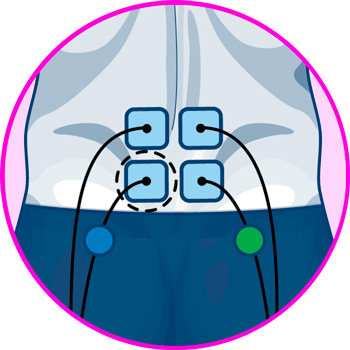
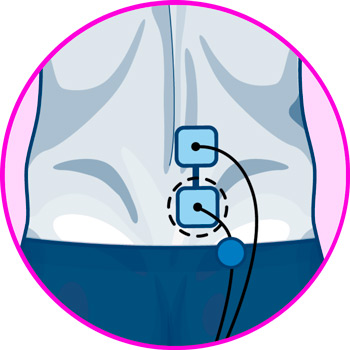
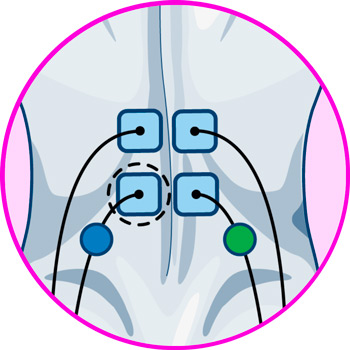
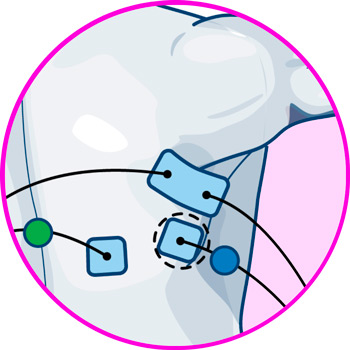
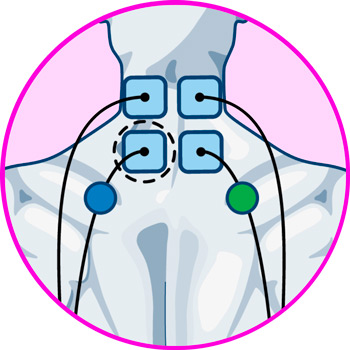

- For low back pain: Low back pain is one of the easiest to treat with TENS electrotherapy. You simply place the electrodes on the lower back.
- For dorsalgia: In the middle back, the positioning can be more confusing since it is a wider area.
- For cervical pain: As in the lumbar area, the cervical area is quite simple to treat with TENS, you simply have to place the electrodes close to the point of pain to achieve a better effect.
- To train the trapezius: In the case of the trapezius muscle, the electrodes should be positioned in the middle area of the trapezius muscle, and each one on the upper or lower part of the muscle, avoiding the spinous process as much as possible.
- For training the latissimus dorsi: For the latissimus dorsi, EMS sessions require one electrode on the muscle belly and another on the upper part of the muscle, just above the rhomboid.
- For the lower back: The use of this therapy in the lower back is much simpler, since you can cover practically the entire region by placing the electrodes on the posterior thoracolumbar fascia.
More types of EMS stimulators and TENS machines you should know about
Most common types of back injuries
Bending, bending and lifting heavy objects with the strength of the back are more common practices than they should be, so injuries at different levels of the back occur very often:
- Low back pain: is the more generic term for back pain that affects the lower back and can extend to the thigh, groin and buttocks. It can be caused by a variety of reasons, from spinal compression to muscle strain.
- Muscle strain: is an injury that occurs when the lumbar muscles are overstretched or torn, causing damage to the muscle fibers resulting in pain, bruising and motor limitations. This injury can be caused by overexertion, inadequate warm-up before physical activity or lack of flexibility.
- Herniated disc (lumbar or cervical): a herniated disc is an injury that affects one of the intervertebral discs, which are housed between each of the vertebrae of the spine. This disc is made up of a gelatinous area surrounded by a fibrous ring, which, when ruptured, causes the injury. These usually occur due to age, but also due to excessive dead weight lifting.
- Vertebral impingement: This injury results in considerable loss of motion along the entire spine caused by blockage of one or more vertebrae, causing numbness, muscle weakness and severe pain. Impingement can occur due to poor posture, repetitive movements involving excessive strain, certain diseases such as obesity or thyroid problems, and accidents.
- Spinal osteoarthritis: is a degenerative disease of the intervertebral discs that causes them to lose elasticity and not cushion impacts, which generates a constant wear of the periosteum that covers the bones of the vertebrae.
Differences between TENS and EMS: Which one to use for back pain?
TENS (Transcutaneous Electrical Nerve Stimulation) is a method of transcutaneous electrical nerve stimulation, a technique that uses a device to control the electrical impulses that generate the sensation of pain in the back.
These devices use different types of currents of greater or lesser intensity, varying between 1 and 250 Hz. The objective of this treatment is to increase the patient's pain threshold by counting the nerve transmissions, causing a sensation of relief in the affected area.
Electro Muscle Stimulation, or EMS for its initials in English (Electric Muscle Stimulation), more than a medical technique, is a therapy applied mainly to physical training, since it consists of using high intensity electrical impulses to generate contractions at a muscular level. This practice serves aesthetic purposes, allowing to increase and tone the muscle mass, thus increasing the strength and performance of muscles.
With this in mind, in the case of ailments in an area with as much musculature as the back, TENS stimulation is much more effective by applying light electrical pulses around the affected areas, relaxing the muscles and limiting the action of pain transmitters.
However, there is very little research on the effectiveness of TENS therapy for chronic back pain, and what is known indicates that although TENS machines provide relief for certain injuries, it is less effective in cases such as severe scoliosis or severe spondylolisthesis, with several studies affirming its inaction in these cases.











